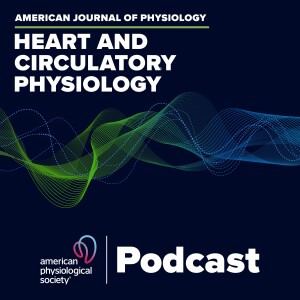
Are failing hearts addicted to glutamine? In this special episode of The AJP-Heart and Circ Podcast, we bring you a conversation in both Japanese and English with Editorial Board member Dr. Junichi Sadoshima (Rutgers University-New Jersey Medical School), Consulting Editor Dr. Jun Yoshioka (City University of New York School of Medicine), and corresponding author Dr. Manabu Nagao (Kobe University Graduate School of Medicine) about the new study by Yoshikawa et al. that explores the interaction between metabolism and pathophysiological cardiac hypertrophy. It is well known that the heart uses various substrates to produce ATP during cardiac hypertrophy. Earlier observations about how cancer cells rapidly consume glutamine during the tumor growth phase led the authors to interrogate the role of glutamine metabolism in cardiac hypertrophy. Nagao and co-authors show that glutaminase is upregulated during cardiac hypertrophy, and that suppression of glutaminase 1 (GLS1) attenuates cardiac hypertrophy. GLS1-mediated glutaminolysis contributes to maladaptive cardiac remodeling by increasing anabolic reactions for hypertrophy and proliferation. Glutamine metabolism is essential for cardiomyocytes. Interestingly, glutaminolysis is activated much faster than glucolysis in response to acute stress. Yoshikawa et al. show that a counter-clockwise shift of the tricarboxylic acid cycle contributes to cardiac remodeling. This study is a game-changer. Listen to learn why.
Sachiko Yoshikawa, Manabu Nagao, Ryuji Toh, Masakazu Shinohara, Takuya Iino, Yasuhiro Irino, Makoto Nishimori, Hidekazu Tanaka, Seimi Satomi-Kobayashi, Tatsuro Ishida, and Ken-Ichi Hirata Inhibition of glutaminase 1-mediated glutaminolysis improves pathological cardiac remodeling Am J Physiol Heart Circ Physiol, published March 30, 2022. DOI: 10.1152/ajpheart.00692.2021
More Episodes
 2019-12-10
2019-12-10
 287
287
 2019-11-19
2019-11-19
 433
433
 2019-11-07
2019-11-07
 367
367
 2019-09-05
2019-09-05
 378
378
 2019-08-21
2019-08-21
 345
345
 2019-08-14
2019-08-14
 297
297
 2019-08-07
2019-08-07
 334
334
 2019-07-08
2019-07-08
 457
457
 2019-06-27
2019-06-27
 354
354
 2019-06-18
2019-06-18
 300
300
 2019-06-06
2019-06-06
 369
369
 2019-04-29
2019-04-29
 337
337
 2019-04-26
2019-04-26
 270
270
 2019-03-26
2019-03-26
 365
365
 2019-03-22
2019-03-22
 337
337
 2019-03-06
2019-03-06
 375
375
 2019-03-05
2019-03-05
 275
275
 2019-01-23
2019-01-23
 347
347
Create your
podcast in
minutes
- Full-featured podcast site
- Unlimited storage and bandwidth
- Comprehensive podcast stats
- Distribute to Apple Podcasts, Spotify, and more
- Make money with your podcast
It is Free
- Privacy Policy
- Cookie Policy
- Terms of Use
- Consent Preferences
- Copyright © 2015-2024 Podbean.com





